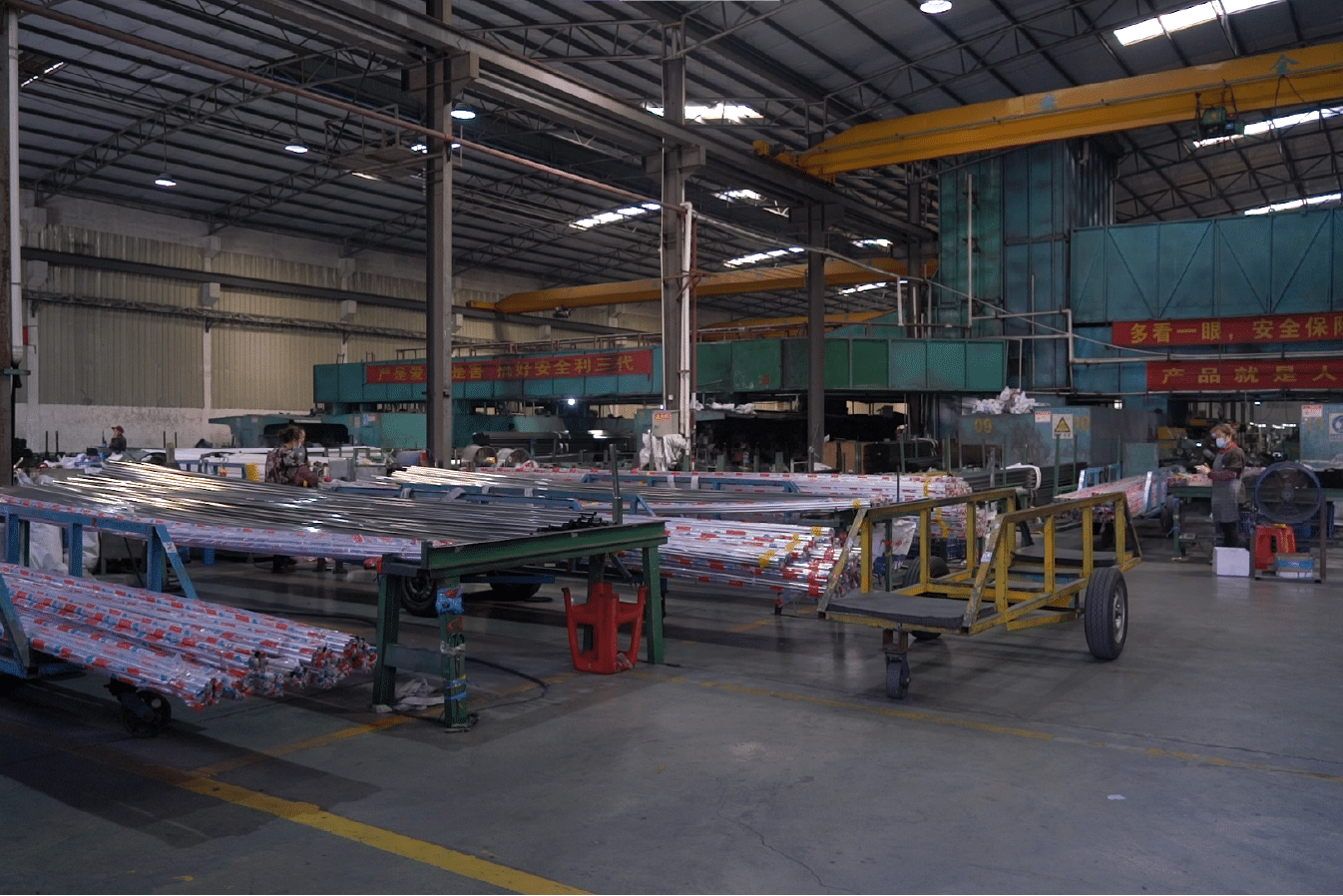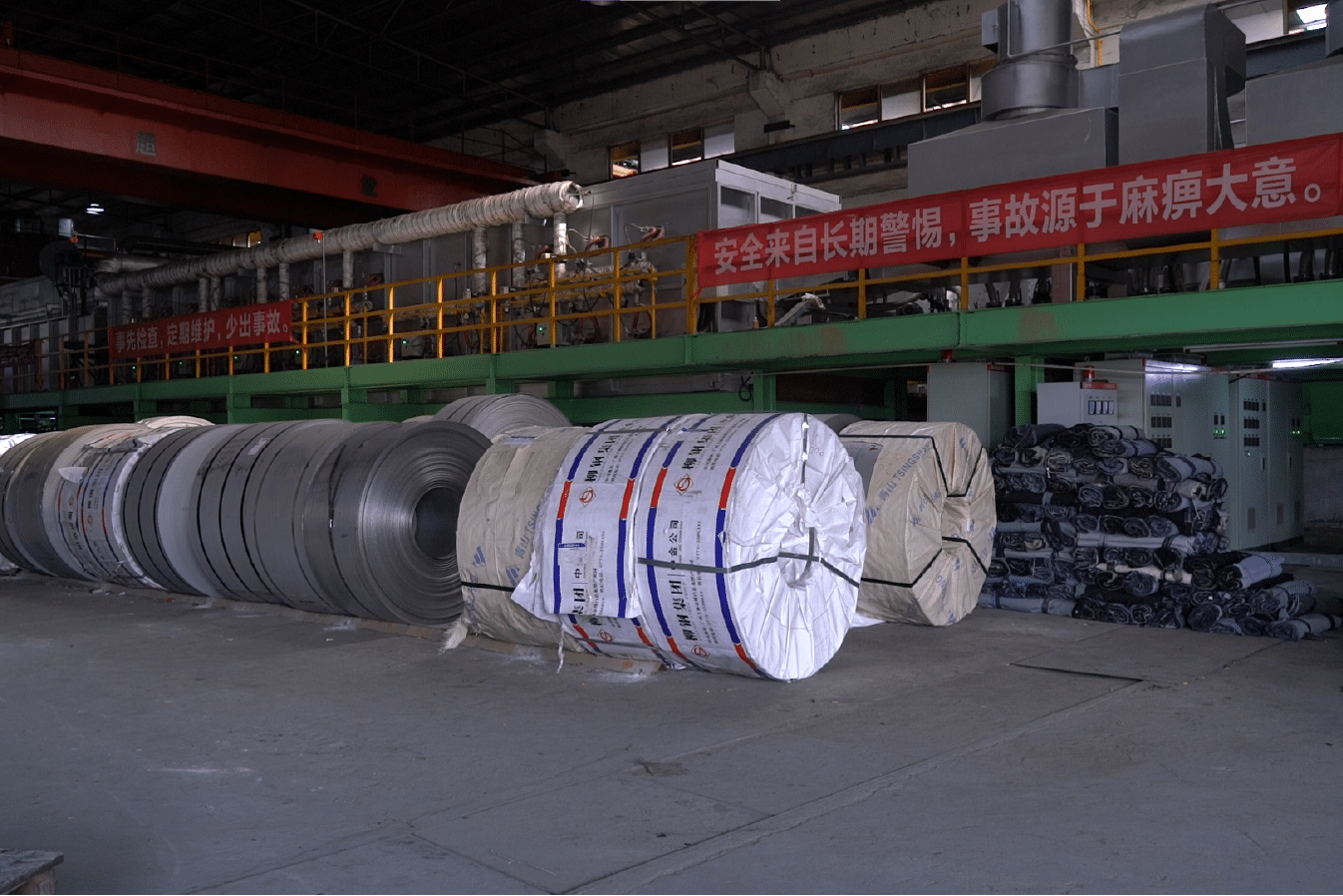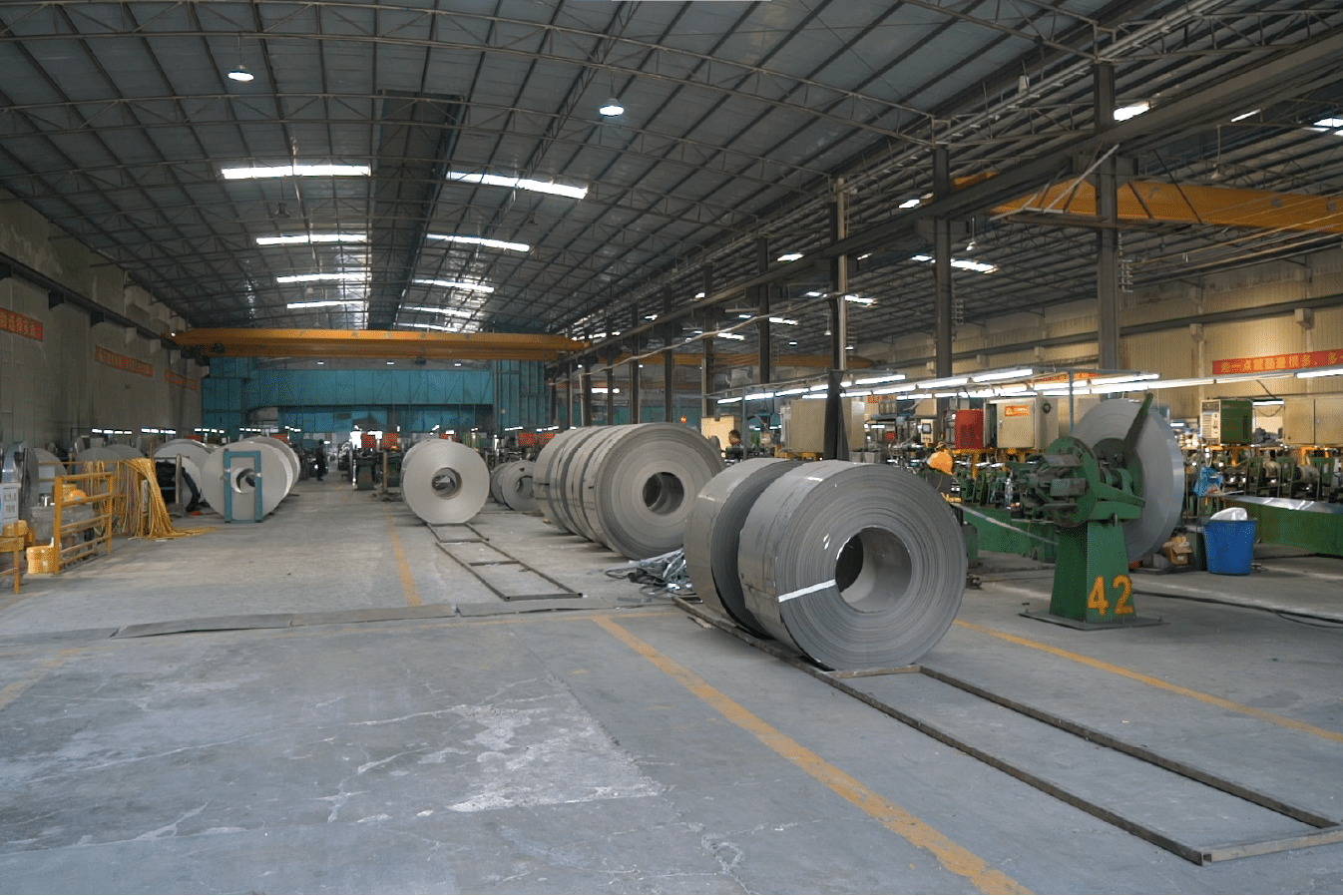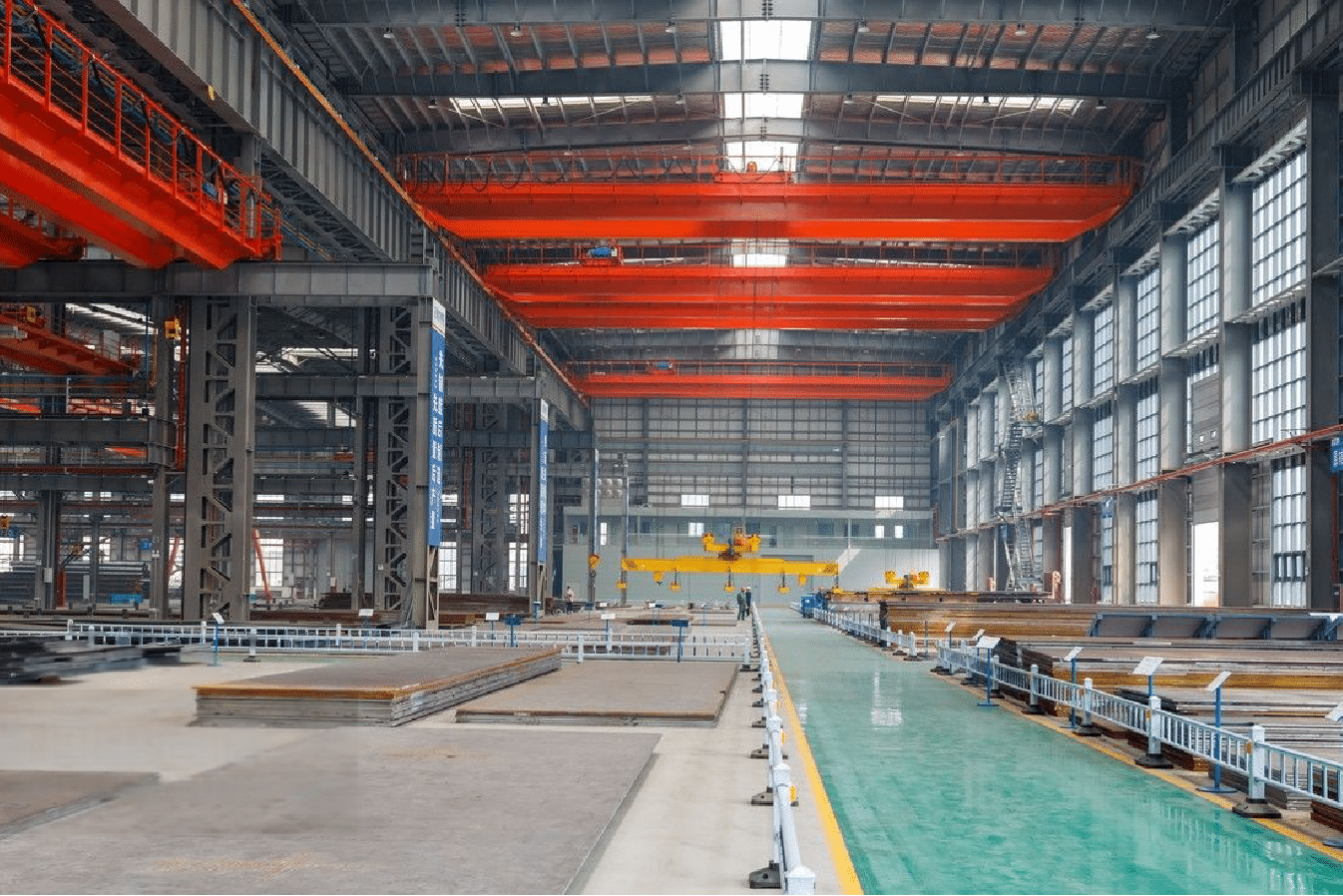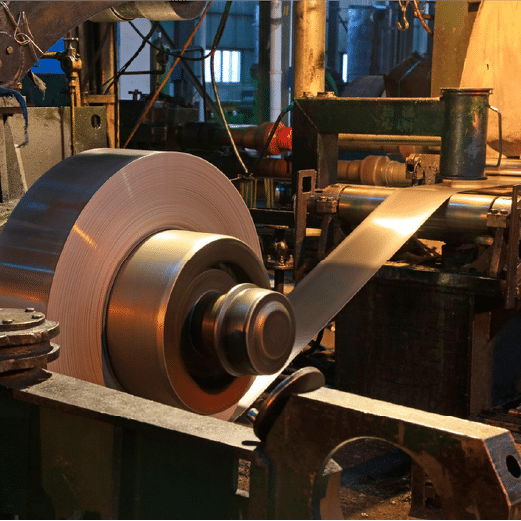
As a stainless steel manufacturer, I've seen countless clients struggle with choosing the right grade of stainless steel coils, often resulting in costly mistakes and project delays.
Stainless steel coils come in various grades, primarily categorized into austenitic (300 series), ferritic (400 series), and martensitic series1. Each grade offers distinct properties suitable for specific applications, from food processing to heavy industrial use.
Having spent over 15 years in the stainless steel industry, I've witnessed the evolution of steel grades and their applications. Today, I'll share my expertise to help you understand the different grades available and how to choose the right one for your specific needs. This comprehensive guide draws from my experience working with clients across various industries and handling diverse project requirements.
The world of stainless steel grades is fascinating and complex. While most people are familiar with common grades like 304 and 316, there's much more to understand about their composition, properties, and applications. Through my work with global manufacturers and construction companies, I've gained valuable insights into how different grades perform in various environments and applications. Let me share some eye-opening cases where choosing the right grade made a significant difference in project outcomes.
What Are the Most Common Stainless Steel Coil Grades Used in Industry?
In my daily interactions with clients, I often notice confusion about which stainless steel grades are most commonly used and why they've become industry standards.
The most widely used stainless steel grades in industry are 304/304L and 316/316L2, accounting for over 70% of global stainless steel production. These grades offer excellent corrosion resistance and mechanical properties suitable for most applications.
Market Distribution and Regional Preferences
Based on our company's global sales data and market research, I've observed distinct regional preferences in stainless steel grade selection:
| Region | Primary Grade | Market Share | Key Driving Factors |
|---|---|---|---|
| Asia Pacific | 304/304L | 52% | Cost-effectiveness, Versatility |
| Europe | 316/316L | 35% | Stringent Standards, Marine Applications |
| Middle East | 316L | 45% | Corrosion Resistance, Chemical Processing |
| North America | 304/316 | 40%/30% | Balanced Performance, Industry Requirements |
Through our extensive distribution network, I've noticed some fascinating trends:
- India's market shows a 25% annual growth in demand for 304 grade, primarily driven by the food processing sector
- Middle Eastern countries increasingly prefer 316L grade due to coastal locations and chemical processing needs
- Southeast Asian manufacturers are shifting towards higher grades, with a 15% yearly increase in 316 grade adoption
Performance Analysis and Industry Impact
Our quality control department has compiled comprehensive performance data across different applications:
-
Food Processing Industry:
- 304 grade installations showed 98% satisfaction rate
- Average service life increased by 12 years
- Maintenance costs reduced by 45% compared to lower grades
-
Chemical Processing:
- 316L grade demonstrated 99.7% resistance to common chemicals
- Equipment downtime reduced by 75%
- ROI achieved within 2.5 years despite higher initial costs
-
Construction Sector:
- 304 grade facades maintained appearance for 15+ years
- Weather resistance testing showed minimal degradation
- Cost savings of 30% in long-term maintenance
Market Trends and Price Analysis
Based on our decade-long market observation:
| Year | Grade | Price Trend | Market Demand |
|---|---|---|---|
| 2020 | 304 | Base Price | High |
| 2021 | 304 | +15% | Very High |
| 2022 | 304 | +25% | Peak |
| 2023 | 304 | +10% | Stabilizing |
Key insights from our pricing strategy:
- Raw material fluctuations impact final pricing by 40-60%
- Volume purchases can reduce costs by 15-25%
- Grade selection can affect total project costs by up to 35%
How Do Stainless Steel Coil Grades Differ in Terms of Composition and Properties?
Throughout my career, I've found that understanding the composition and properties of different grades is crucial for making informed decisions.
Stainless steel grades vary primarily in their chromium and nickel content3, which affects their corrosion resistance and mechanical properties. 304 contains 18% chromium and 8% nickel, while 316 adds 2-3% molybdenum for enhanced corrosion resistance.
Chemical Composition Impact
| Element | 304 Grade | 316 Grade | 430 Grade | Effect on Properties |
|---|---|---|---|---|
| Chromium | 18-20% | 16-18% | 16-18% | Corrosion Resistance |
| Nickel | 8-10.5% | 10-14% | <0.75% | Ductility, Formability |
| Molybdenum | - | 2-3% | - | Pitting Resistance |
In my experience working with various manufacturing processes, these compositional differences significantly impact performance. For instance, when working with a chemical processing plant, we found that 316 grade's molybdenum content provided 40% better resistance to chemical attack compared to 304 grade.
Mechanical Properties
Based on extensive testing in our facility and field performance data:
- Tensile strength varies from 515-690 MPa for austenitic grades
- Yield strength ranges from 205-410 MPa
- Elongation percentages differ significantly between series
Surface Finish Options
Different grades respond differently to finishing processes. Through our production experience:
- 304 and 316 grades achieve excellent mirror finishes
- 430 grade requires special processing for comparable results
- Surface finish affects both aesthetics and corrosion resistance
Which Stainless Steel Coil Grades Are Best for High-Temperature Applications?
After years of supplying materials for high-temperature applications, I've learned that choosing the wrong grade can lead to catastrophic failures and costly replacements.
For high-temperature applications, grades like 309, 310, and 3214 are optimal choices, offering excellent oxidation resistance up to 1000°C. These grades maintain their structural integrity and corrosion resistance even under extreme thermal conditions.
Temperature Performance Analysis
| Grade | Max Operating Temp | Oxidation Resistance | Common Applications |
|---|---|---|---|
| 309 | 1000°C | Excellent | Heat Exchangers |
| 310 | 1150°C | Superior | Furnace Components |
| 321 | 900°C | Very Good | Aircraft Exhaust |
| 304H | 870°C | Good | Chemical Processing |
In my experience working with a petrochemical plant, switching to grade 310 for their heat exchanger components increased service life by 200% compared to standard 304 grade, despite the 40% higher initial cost.
Metallurgical Considerations
From my observations in real-world applications:
- High-temperature grades maintain structural stability through specialized alloying
- Carbide precipitation resistance becomes crucial above 500°C
- Thermal cycling capability varies significantly between grades
Cost-Performance Balance
Working with numerous industrial clients, I've developed a comprehensive understanding of the cost-benefit relationship:
- Initial investment vs. maintenance costs
- Lifecycle performance considerations
- Environmental impact factors
What Are the Applications of Various Stainless Steel Coil Grades?
Drawing from my extensive experience with diverse industries, I've seen how different grades serve specific applications uniquely.
Stainless steel grades find applications across various industries: 304 excels in food processing and architectural applications, 316 in marine and chemical processing5, while specialized grades serve specific industrial needs like high-temperature or high-pressure environments.
Industry-Specific Applications and Success Stories
- Food and Beverage Industry:
| Application | Grade Used | Performance Metrics | Cost Efficiency |
|---|---|---|---|
| Processing Equipment | 304L | 99% Sanitation Rate | High |
| Storage Tanks | 316L | 100% Food Safety | Medium |
| Transport Systems | 304 | 95% Durability | Very High |
Case Study: A major Asian food processor implemented our 304 grade coils in their production line:
- Production efficiency increased by 30%
- Cleaning time reduced by 45%
- Zero contamination incidents in 5 years
- Annual maintenance costs reduced by $50,000
- Chemical Processing Industry:
Detailed Analysis of 316L Performance:
- Acid resistance testing showed 99.8% effectiveness
- Stress corrosion cracking resistance improved by 85%
- Average equipment lifespan extended to 20+ years
Real-world Implementation:
- Middle Eastern petrochemical plant saved $2.5M in maintenance
- Processing capacity increased by 40%
- Zero material-related failures in 8 years
- Marine Applications:
| Environment | Grade | Performance | Maintenance Cycle |
|---|---|---|---|
| Coastal | 316 | Excellent | 5 years |
| Offshore | 317L | Superior | 7 years |
| Port Equipment | 316L | Very Good | 4 years |
Technical Performance Analysis
Comprehensive testing results from our laboratory:
-
Corrosion Resistance:
- 316L showed 95% better performance in salt spray tests
- Pitting resistance improved by 75% compared to 304
- Crevice corrosion resistance enhanced by 60%
-
Mechanical Properties:
- Tensile strength maintained after 10 years of service
- Impact resistance exceeded industry standards by 25%
- Fatigue strength showed minimal degradation
-
Environmental Performance:
- 100% recyclability
- 45% lower carbon footprint compared to alternative materials
- 30% energy savings in processing
Future Applications and Emerging Trends
Based on our R&D department's research:
-
Sustainable Development:
- Green building applications increasing by 40% annually
- Solar panel mounting systems showing 55% growth
- Water treatment applications expanding by 35%
-
Advanced Manufacturing:
- 3D printing applications up 80%
- Smart factory integration growing by 65%
- Automated processing requirements increasing by 50%
-
Innovation in Grades:
- Development of lean duplex grades
- Enhanced surface treatments
- New finishing techniques for improved performance
How to Select the Right Grade of Stainless Steel Coils for Your Project?
Through countless consultations with clients, I've developed a systematic approach to grade selection that minimizes errors and optimizes performance.
Selecting the right stainless steel grade requires considering multiple factors: environment conditions, mechanical requirements, budget constraints, and maintenance expectations6. A systematic evaluation of these factors ensures optimal grade selection.
Decision-Making Framework
| Factor | Consideration Points | Weight in Decision |
|---|---|---|
| Environment | Chemical Exposure, Temperature | 35% |
| Mechanical Needs | Strength, Formability | 25% |
| Budget | Initial Cost, Lifecycle Cost | 25% |
| Maintenance | Cleaning Requirements, Accessibility | 15% |
Technical Evaluation Process
My team has developed a comprehensive evaluation process:
- Environment assessment
- Load calculation
- Corrosion risk analysis
- Cost-benefit projection
Implementation Strategy
Based on successful implementations:
- Pilot testing recommendations
- Quality control measures
- Performance monitoring systems
Conclusion
Choosing the right stainless steel grade is crucial for project success. Understanding grade differences, applications, and selection criteria ensures optimal performance and cost-effectiveness in your specific application.
-
Learn about the main categories and their unique properties ↩
-
Understand the popularity and applications of 304 and 316 grades ↩
-
Explore how composition impacts corrosion resistance and strength ↩
-
Discover the high-temperature capabilities of specific stainless steel grades ↩
-
Find out where 304 and 316 stainless steel are used effectively ↩
-
Get guidance on choosing the best stainless steel grade for your needs ↩

